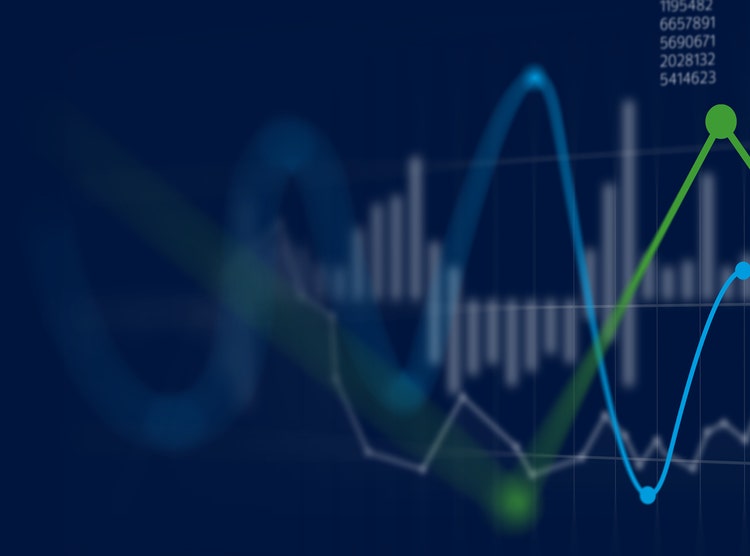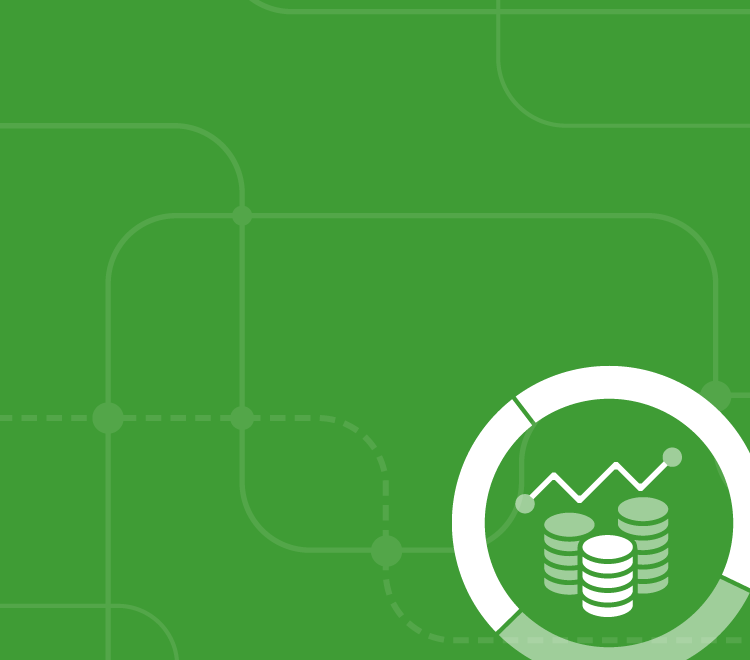Roaring inflation. Widespread industrial action. Top Gun in the cinema. Kate Bush at number one in the charts. You can be forgiven for thinking we’ve returned to the 1980s! However, we think it will take less than two years to bring inflation back under control – not a decade, as it did back some 35 years ago. We expect that inflation will be 2% again by the end of 2024 (after peaking at 10.5% in Q4 this year) and that interest rates will rise to between 2.5% and 3%.
Summary
Inflationary price shocks will have the biggest effect on lower-income households by reducing their ability to pay for essentials; whether it’s driving to work, heating a home, or putting food on the table.
But the price shocks will also lead to reduced discretionary spending. In turn, this will cause a slowdown in economic growth that affects all income classes and businesses.
We won’t know exactly what the departure of Boris Johnson as UK Prime Minister means for the economic and inflationary outlook until there is a clearer picture of who might succeed him and what their economic priorities are.
But it seems likely that in order to win over the Conservative party membership, the next PM will have to promise to do more to support the economy through the cost-of-living crisis. That suggests that looser fiscal policy might be in works for later this year.
Looser fiscal policy will support the economy in the short-term and will probably reduce the risk of a recession at the end of 2022 or early 2023, but it also risks stoking inflation by increasing demand for domestic goods, services and labour. In this case, the Bank of England would probably raise interest rates by more and faster than we currently expect, which could lead to slower economic growth later in 2023.
The impact of higher inflation has already been significant. Household energy prices rose by 70% y/y in May and food prices are up 8.6%, sending overall inflation to 9.1%.
Admittedly, we do not anticipate inflation staying that high. But there are significant geopolitical risks that are beyond the control of policymakers and not linked to the fundamentals of domestic economics.
Indeed, Russia has already reduced flows of natural gas to Europe, causing prices to surge again. And if flows of natural gas and oil are further disrupted, we could very well see further highs in oil, gasoline and energy prices. Such price increases could set the stage for another recession.
The Bank of England (BoE) can do little about the war in Ukraine or the pandemic in China. Therefore its task is to tamp down embedded inflation expectations – which, if they increase, would force the BoE to raise interest rates significantly, as in the 1980s. That would cause a severe drop in demand and a deep recession.
Is a recession inevitable? Can the BoE engineer a soft landing for the economy and create price stability?
After contracting in April, there is no denying the economy is weak. We are expecting GDP to fall by 0.1% q/q in Q2. Even so, household balance sheets are much stronger than before the pandemic and additional government support should help the economy to avoid a recession.
Finally, we think that the monetary authorities have the flexibility to adapt to rapidly changing conditions, whether in the rate of economic growth or the rate of inflation. There have certainly been enough disturbances and shocks over the past five years to believe that.
So we remain optimistic, but with our eyes wide open to the risks.
What’s driving inflation?
Before we can analyse where inflation is likely to go, and how high interest rates will have to go to tame it, we have to understand what is driving the current bout of inflation.
By far the biggest driver of May’s 9.1% inflation was soaring food, fuel and energy prices, which accounted for about 50% of the annual rise in prices. Inflation in other goods, such as clothing and vehicles, accounted for another 30%. Putting all this together, the BoE estimates that around 80% of inflation is due to global shortages and the jump in prices of goods set on global markets, such as oil. That means that domestic forces (eg demand for UK goods and services) are driving only 20% of inflation.
Admittedly, there are signs that inflation is becoming more broadly based. Services inflation rose to 4.9% in May, from 4.7% in April – the fourth consecutive rise and highest rate since 1993. What’s more, the proportion of goods and services with inflation of over 4% rose from 14% to 66% between April 2021 and April 2022.
However, the current surge in inflation is clearly the work of two main culprits. The first is the pandemic, which dramatically increased demand for goods across the developed world. At the same time, it shut down factories and ports, creating havoc along finely tuned global supply chains. The inevitable result was a sizable increase in the prices of affected goods. For example, a shortage of microchips crimped the production of new cars, causing the price of used vehicles to rise by 27% y/y in April.
Second, the war in Ukraine has caused marked increases in the prices of many commodities, from energy to agricultural goods and metals. The price of natural gas in the UK, for example, is more than three times its level of a year ago.
Where next?
Inflation is likely to move higher over the rest of this year. Pipeline pressures remain elevated, after already shaken supply chains were further rattled by the war in Ukraine and China’s extended lockdowns. Input prices rose by 22.1% on the year in May, suggesting that businesses will continue raising prices over the rest of this year.
Indeed, we think there is even worse to come:
- lockdowns in China are likely to drive up goods and shipping prices again;
- food price inflation will continue to climb over the rest of the year, hitting 10% or higher;
- Ofgem will probably lift the energy price cap by another 30% or 40% in October. This will keep inflation high and push it to 10.5% in October.
The more difficult questions are how quickly inflation will fall once it has peaked, and when will it hit 2% again?
Assuming there aren’t further large rises in the prices of oil and natural gas over the rest of this year, energy price inflation should fall from a peak of over 110% in Q4 to 40% by Q2 2023, and to zero by the end of 2023. This would mean that energy prices would go from adding 3.7ppts to inflation to contributing nothing.
Goods inflation is also likely to fall in the first half of next year. The huge price rises associated with pandemic disruptions won’t be repeated, and consumers will return to spending more of their income on services and less of it on goods.
That said, there are significant risks around the outlook for goods inflation. A further disruption in natural gas or oil flows from Russia could spike energy prices again, or another supply chain crisis could easily cause goods prices to rise rapidly over the summer. This could mean inflation peaks at a higher rate and comes down more slowly. Services inflation is likely to prove stickier. The exceptionally tight labour market will keep wage pressures elevated well above the 2% to 3% that is considered consistent with the BoE’s 2% inflation target for the next year or two.
In fact, in our recent survey on inflation and supply chain pressures, labour costs were the most commonly cited area where cost pressures were rising.
However, there are some early signs that the labour market is peaking. The unemployment rate ticked up in April and although the number of vacancies still grew the rate of increase was minimal. Much softer economic growth in the second half of the year, due to the cost-of-living crisis, will dampen demand for labour and ease some of the tightness in the labour market. The RSM UK Middle Market Business Index showed a sharp drop in the proportion of firms planning to increase hiring and pay over the next six months.
We think the weakness in economic growth over the next 18 months and the prospect of a recession will do much of the work in bringing down inflation. One way to think about the recent surges in imported energy and food prices is as a tax on consumers and businesses. Consumers have less to spend on domestically produced goods and services, and businesses have fewer profits to put towards large wage increases. The cost-of-living crisis will also limit firms’ ability to pass on cost increases. Even though 44% of firms in our survey said they were increasing their selling prices, 41% said they were improving efficiency and 38% of firms were accepting lower short-term profits.
These factors should lead to less demand in the domestic economy and, all else being equal, lower domestically generated inflation in the medium term.
So even though we aren’t expecting a recession or a huge jump in the unemployment rate, flat economic growth over the next year and a small rise in the unemployment rate to 4.5% or so will help to drag inflation down.
Putting it all together, we think that headline inflation will peak in October at around 10.5% and fall rapidly from the second half of 2023 as the recent huge falls in energy prices drop out of the annual comparison. But a tight labour market means it will probably still be the first half of 2024 before inflation is back to the BoE’s 2% target.
How high will interest rates rise?
Given that 80% of the current bout of inflation is due to soaring goods and commodities prices, which are set on international markets, there’s little the BoE can do to immediately reduce inflation. After all, raising interest rates will do nothing to increase the supply of natural gas, or to reduce the cost of goods shipped from Asia.
Instead, the Monetary Policy Committee’s (MPC) main focus is on preventing the current inflation shock becoming embedded in household’s inflation expectations, and leading to a wage-price spiral.
Short-term inflation expectations have risen sharply, but longer-term expectations have remained relatively well anchored. The suggestion is that most households view the current situation as more of a one-off than the start of a new high-inflation period.
And even though the BoE has been criticised for falling behind the US Federal Reserve, we don’t think it is suffering from a credibility problem that would force it to raise interest rates dramatically (as it had to do in the 1980s and 1990s). Indeed, given the weakness in the economy, if the MPC raises interest rates too high or too quickly it risks tipping the economy into a damaging recession, which would see inflation fall below the 2% target in 2024.
Overall, we expect three more interest rate hikes this year of 25 basis points, which would take the BoE’s policy rate to 2%. We then expect at least two more rises in 2023, meaning that interest rates will likely peak between 2.5% and 3%.
However, the risk is that inflation proves stickier than we think, which would force the BoE to raise interest rates by more than we anticipate.


The Real Economy
Global Supply Chains report
Discover more about what middle market leaders are doing to lessen the impact of labour and supply shortages, and what more can be done.
true
true
false


The Real Economy
The Real Economy offers an accurate and current reflection of the middle market to help businesses anticipate and address the issues and challenges they face in todays economy.
false
true
false


Subscribe to The Real Economy
Subscribe to our mailing list to receive all our economic commentary and analysis directly in your inbox.
false
true
false

